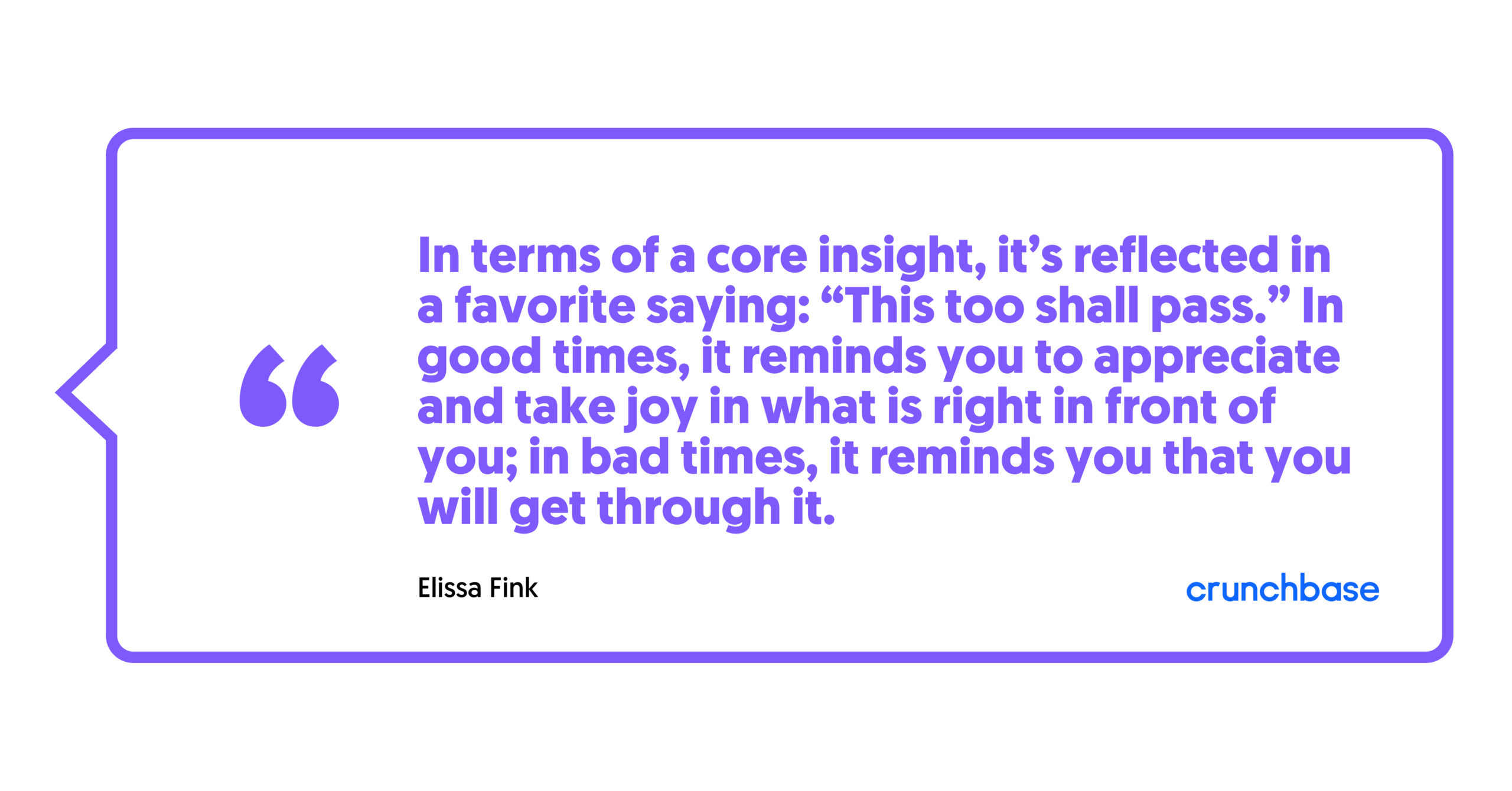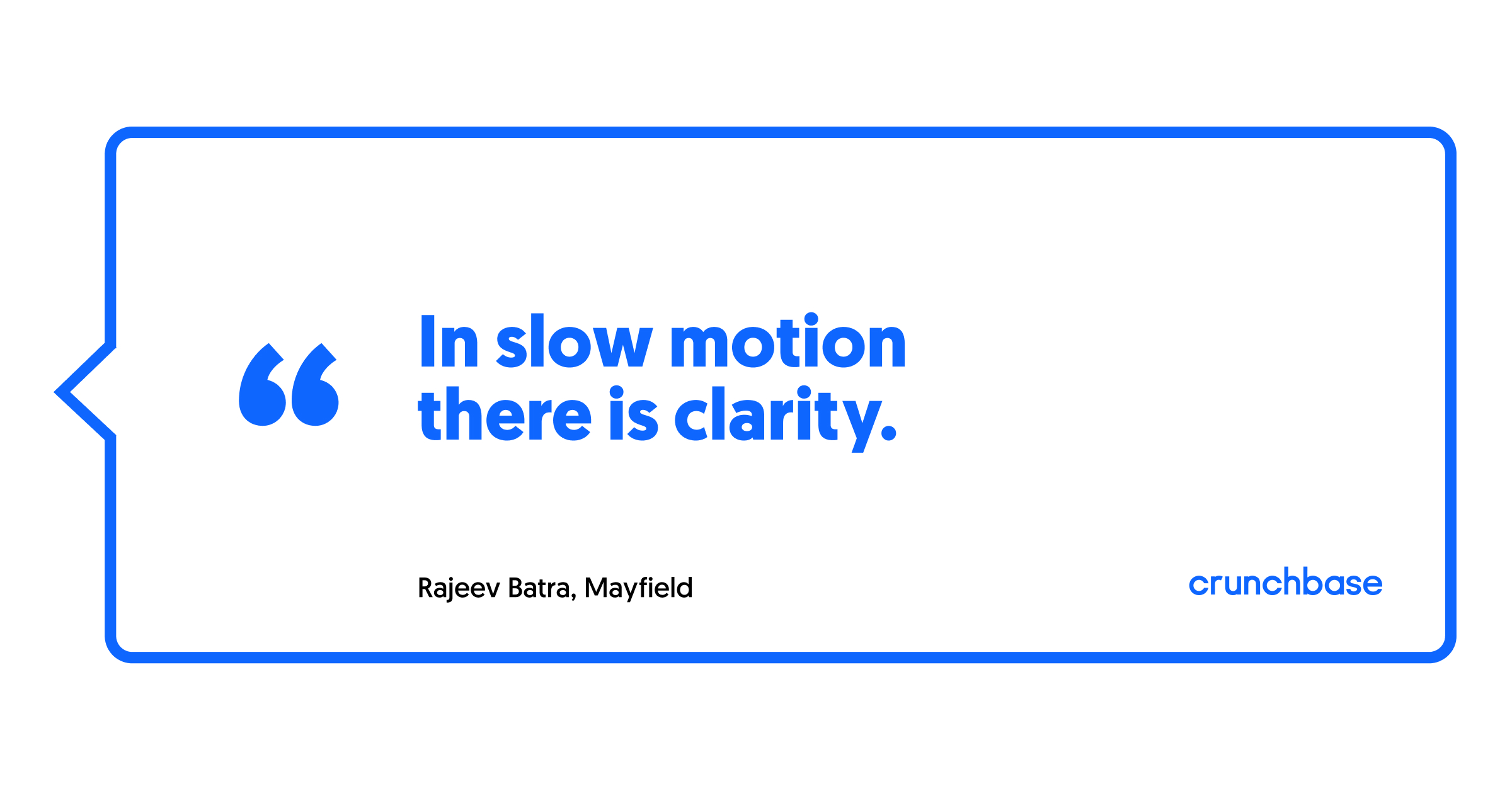Interview with Elissa Fink, hosted by Rajeev Batra, Enterprise Investor at Mayfield
Elissa’s Background
As a long time data-driven marketing executive, Elissa Fink recently retired from Tableau Software as Chief Marketing Officer. She now advises fast-growing companies and serves on multiple boards. Having spent over 11 years at Tableau, she is credited with driving marketing through all stages – from ~$5 million to over $1 billion in revenue. Elissa was also the key driver who developed the Tableau brand and cultivated the loyal and enthusiastic Tableau fanbase from 2,000 to 65,000 customers and millions of users. In addition, she teaches classes at the University of Washington.
Foreword
I’ve had the pleasure of knowing Elissa Fink for over five years now. I’ve always been struck by her incredibly optimistic personality and her amazingly creative and human approach to her role as a marketeer. She has been an incredible mentor to many people during her twelve year tenure at Tableau, where it grew from a fledgling startup of fewer than fifty people to a billion dollar plus revenue company.
Elissa was central to redefining the business intelligence category. This wasn’t just about recasting. She took a complex technology that was typically bought and sold by highly technical people and made it accessible to every day business users. She did this by building an amazing team along the way.
In her post-operating role she’s serving as an advisor, investor, and mentor at companies such as Outreach (a Mayfield investment), as she continues to pay it forward. She is also teaching a go-to-market class at the University of Washington on B2B marketing.
Rajeev: What are you known for? What is the core insight you’ve developed in your career?
Elissa: Tough question! Depending on when I think about this, I’m either known for my upbeat attitude or my regrettable habit of swearing. In terms of a core insight, it’s reflected in a favorite saying: “This too shall pass.” In good times, it reminds you to appreciate and take joy in what is right in front of you; in bad times, it reminds you that you will get through it. In my times at a fast-growing startup which were filled with both wonderful and difficult moments, this saying gave me at turns joy and strength.
Rajeev: That’s a good one; I can completely relate to it. I often look for the silver lining no matter the circumstances, even in the worst of situations.

Rajeev: Name one learning from a mentor that has influenced you.
Elissa: I’ve been lucky to work with and be influenced by many amazing people. Tableau’s founder & original CEO Christian Chabot once told me about the advice a mentor gave him, which to this day I share with people and companies I advise. “Always hire people whose best years are in front of them.” You want people who look forward to the future and are ready and willing to step up but also are not tired, cynical or feel like they already know it all.
Rajeev: It’s all about giving it your all and if you don’t have your all to give then you shouldn’t take it on.
Rajeev: What is your favorite book and why?
Elissa: Oh geez, that’s a tough one! I love reading, particularly biographies, memoirs and some historical fiction (I figure all that makes up for me not paying enough attention to history in school). I love storytelling and stories from history amaze and inspire me. If I had to name a few books, I’d say “Educated,” “The Tattooist of Auschwitz,” “Truman,” “Sapiens,” anything by Walter Isaacson, and anything by Doris Kearns Goodwin.
Rajeev: I love to read but I’m terribly slow so I’ve moved to audiobooks. We should exchange book lists; I like yours. Walter Isaacson for sure – I loved his biography on Da Vinci (“Leonardo Da Vinci”). Given that we live in this world of innovation, Da Vinci is kind of like the patron saint.
Rajeev: What is your favorite metric?
Elissa: Well that depends on what your most important priority is. I think that the metric that measures the most important thing in your business, given your current stage, should be your favorite metric. So keep in mind that your favorite metric will change as you grow and evolve.
Rajeev: That makes a lot of sense. Businesses are not static things; they evolve.
Rajeev: Can you share 3 key takeaways on the topic you spoke about at our 2019 Leadership & Life Summit: First Break In Then Break Out (on category creation)?
Elissa:
- Break into a category – Start by choosing an existing category wisely. Although it happens, it’s a rare startup that invents a new category from the beginning. There are advantages to working from inside an existing category, mainly people and influencers are already there and waiting to be disrupted, and budgets already dedicated and being spent.
- Break the category – Have a story about how bad and big the problem is, why the category needs disrupting and how you’re fundamentally different. Challenge the category’s status quo, call BS on the old ways, show how the problem costs more than anyone can see, and that this solution of yours will dramatically expand – even break – the category. Magnitude matters.
- Break out of the category – Leverage the power of your early customers as evidence of new world order – a new category. You didn’t start this company because no one needed it. Your customers and followers get it – make it easy for them to help you not only prove your vision but, importantly, share their stories.
Rajeev: I love it. You make it sound so simple. I wish it were. The world needs more people like you, Elissa, to help them.
Rajeev: What is your advice for someone going from 0-1 (still figuring things out – zero to a couple million ARR), 1-10 (figured it out, beginning to scale and achieving finished product market fit), and 10-100 (full on scaling mode)?
Elissa:
- At 0-1, you need marketing mostly at a strategic level – where are you headed in terms of your mission, your story, and your value proposition aimed at the customer market you want to serve. Work with a scrappy agency or a smart contractor to fulfill your day-to-day needs.
- At 1-10, you need to start thinking and acting tactically about how you clearly define your brand, how you tell your story succinctly and engagingly, and how you find the right prospects. It’s time to hire great people who will help define and build your culture so hire wisely.
- At 10-100, you need to start thinking ahead of the market to be ready for future growth while simultaneously driving today’s growth. That balance is harder than it sounds. You’re figuring out how to scale your marketing efforts and your team to tell your story and attract people to your brand as prospects, as customers and as community members – and even as employees. You’ve got to scale the marketing flywheel. Having a clearly defined brand and mission at this point is absolutely critical.
Rajeev: That’s very succinctly put. I think a lot of times companies have difficulty delineating where they are on the journey, but this is a very helpful way to frame it.
Rajeev: Are you willing to make a go-to-market prediction we can hold you to for 2020? I must admit, I’m not a big fan of predictions, but I thought it’d be fun to ask anyhow.
Elissa: Ha ha – of course! I’m as bad a guesser as the next guy. Let’s see… executives will continue to realize that investments in marketing need to be based on a data and technology platform that drives the marketing flywheel to spin faster and more efficiently – from creating brand awareness based on your mission, to attracting the right prospects with meaningful messages, to creating successful, long-term customers, all the way to building an engaged community, which in turn amplifies your brand which attracts prospects and so on. You can’t do any of it without data and the right technologies.
Rajeev: The use of data continues to be ever more important in marketing. I think that’s pretty safe, Elissa, we’ll go with that.
Rajeev: What’s the one thing you wish you had done differently?
Elissa: I wish I had taken more time to stop and think, to find and ask my external peers for advice and input, to actively learn more, to see what other people were doing. You’re so busy in a startup – you put your head down working intensely on something and next thing you know it’s six months later. I realize now in my “semi-retirement” phase that I could have been a better leader and executive had I spent more time thinking and acting more deliberately.
Rajeev: I think a lot of people can agree with that one. And you know, I have a saying I like to tell people – in slow motion there is clarity. I am always trying to remind others around me of this, and it’s the most difficult of all to apply it to yourself, so I hear you. In slow motion there is clarity.

Rajeev’s interview with Elissa Fink is part two of the Mayfield series, “From Good to Great: How Go-To-Market Leaders Transform B2B Software Companies.” In this series, we will highlight ten breakout go-to-market leaders who will share their stories directly. The series will feature non-obvious insights on key topics such as category creation, product-market fit, the role of culture in elevating brand, and scaling community-oriented marketing. Stay tuned!




